The Big Midterm
The Big Midterm
I’ll be honest, this project hasn’t exactly gone how I would have hoped it would. Don’t get me wrong, I’ve learned a lot about level design, mechanic design and especially how to code and block things out in unreal. However, this product doesn’t quite line up with what I had in mind when I pictured the project back when we were told to look for mechanics we’d want in our stealth game. However, this ironically gave me the time to think about using level design and enemy placement to get the most out of the very simple mechanics I did have. It wasn’t exactly the experience I had hoped for, but one that I certainly did appreciate and is probably the mechanically better product for it.
Across the project, I have become notably more comfortable in Unreal. I would have liked to do more, but the skill I have built up so far both in understanding Unreal’s coding and placement is admirable. I have much to learn, but adjusting the sightlines of enemies and the position of shelves has been an enjoyable task and an enlightening one. As someone who rarely plays stealth games naturally, it’s been interesting to delve into a genre I have little experience in yet one of many that relies so heavily on environmental factors. Especially when playtesting, problems and opportunities that I hadn’t even dreamt of came up and had to be adjusted.
Project Goals, Player Emotions and Actions

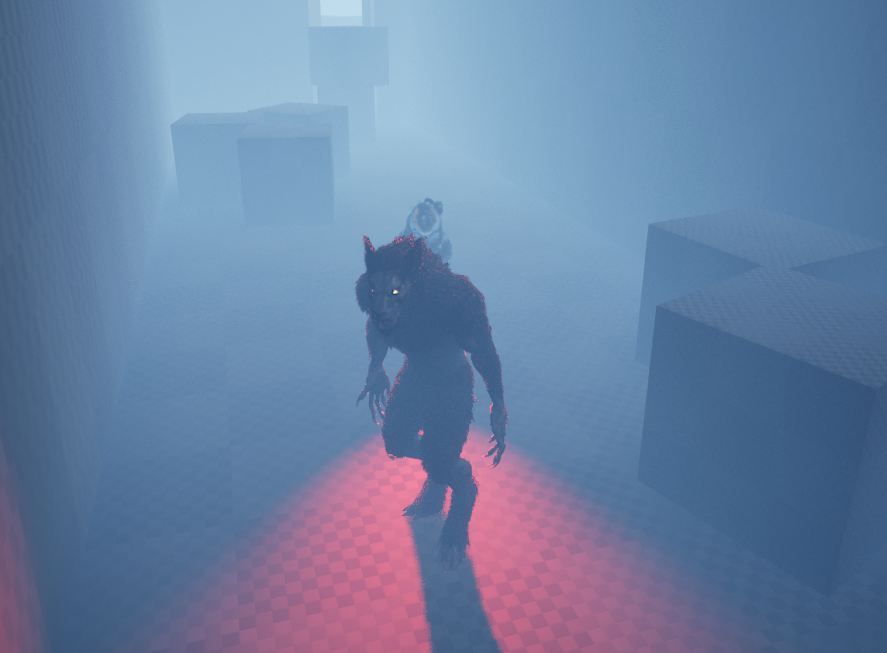
The most prominent emotions I wanted to target with the project were feelings of cleverness and claustrophobia via tight environments and enemy placements. The player should feel smart as they trail just behind the enemy on their patrol route but also a bit nervous when slinking behind boxes in tight corridors with prying flashlights lurking just behind and when the fast final boss is on screen. I especially wanted them to feel nervous as they approached the hallway, whose enemy is so close to them right and in such a tight space. Though of course it can’t all be so intense and the occasional slower section and break room should hopefully both let the player stretch their nifty dash ability’s legs against less observant enemies in a slightly more open space or catch their breath via a lack of enemies at all.
The Design Documents
For this assignment, we were provided with multiple Game Design Documents with requirements to meet and advice to learn from. These documents, as well as in person advice from the professor acted as important direction for the project, with the biggest contribution being to the level design/enemy placement. The most important aspects of the GDDs and how they shaped my project are as follows:
Game Loop: The game loop of sneaking and dashing away from danger helped to shape the enemy placement throughout the warehouse. This is especially true when trying to build the contrast between more open areas and tighter ones. Additionally, the dash mechanic eases what would otherwise be almost impossible escapes in the "fleeing" aspect while not being nearly as helpful against the fast enemy at the end (though still useful) as an escalation.
Player Advantages: The player's ability to dash, hide, learn patrol routes and throw items are very important to the warehouse. Especially observing patrol routes lets the player take multiple methods and routes throughout the rooms while making existing routes via just hiding behind cover much easier. The final area and walkways were directly built so that the player could observe the enemy's patrol paths before taking them on.
Level Design: The GDDs description of long hallways and sightlines actually directly inspired a room of the level, being the hallway right before the final room. The document as a whole helped guide the use of claustrophobic tightness in the project and the placement of cover as a whole.
The Story and Map Itself
You, the player, are a werewolf going through a warehouse to retrieve something very important that an evil group has stolen from you: your house keys. In order to go back home, you’ll need to get through the several guards and since you’re a pacifist you’ll have to sneak by them instead of tearing them to shreds. With this goofy story, I want the warehouse layout itself to feel tense and claustrophobic, but ideally the art style to match the goofiness. A silly concept knowingly taking itself a bit too seriously on some level, that kind of thing.


Primarily drawing from early Metal Gear Solid games, the first floor intends to both be an introduction with much cover to hide from the enemies but also to begin the feeling of tightness and tension via corners and several tall obstacles. As the floor goes on, the options to deal with the enemies open up dramatically, but as do the enemies. The most effective method to deal with the enemies is to trail one due to the enemy's sight cones covering a lot of space but not directly behind themselves, which I personally find extremely satisfying to pull off. However, other options either swing more towards exploration to find a distraction or almost a feeling of suffocation via more traditional cover with double the enemies. The exact current placements of the shelves and cover took some testing and editing and will most likely continue to change as the project goes on but are intended to be simple enough to understand but also build the sense of tightness and a touch of exploration.


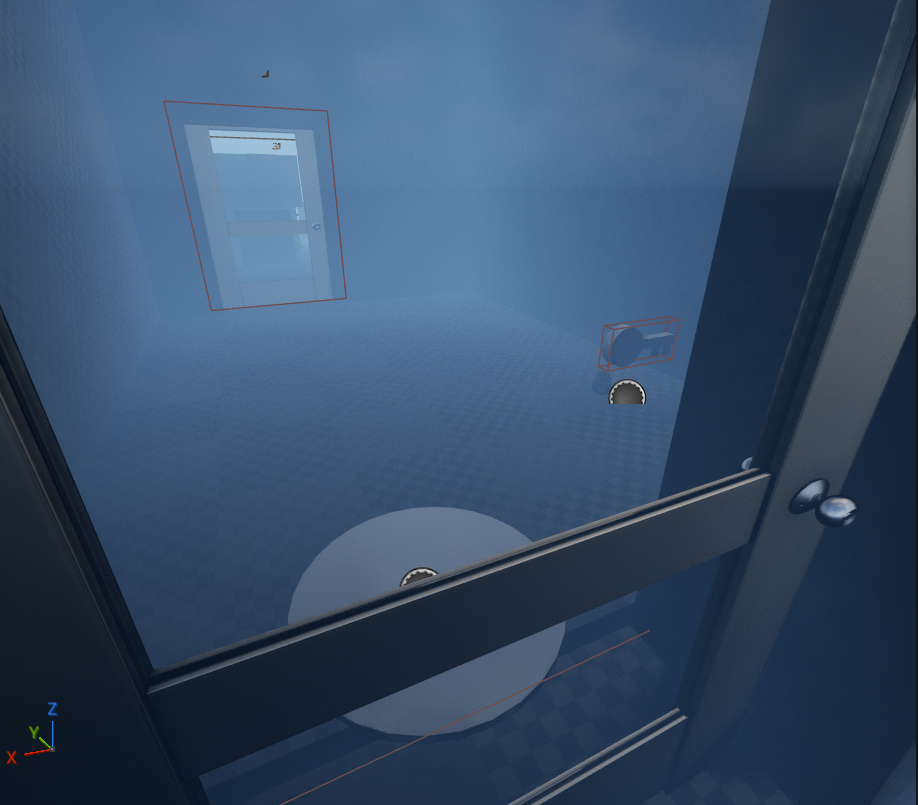
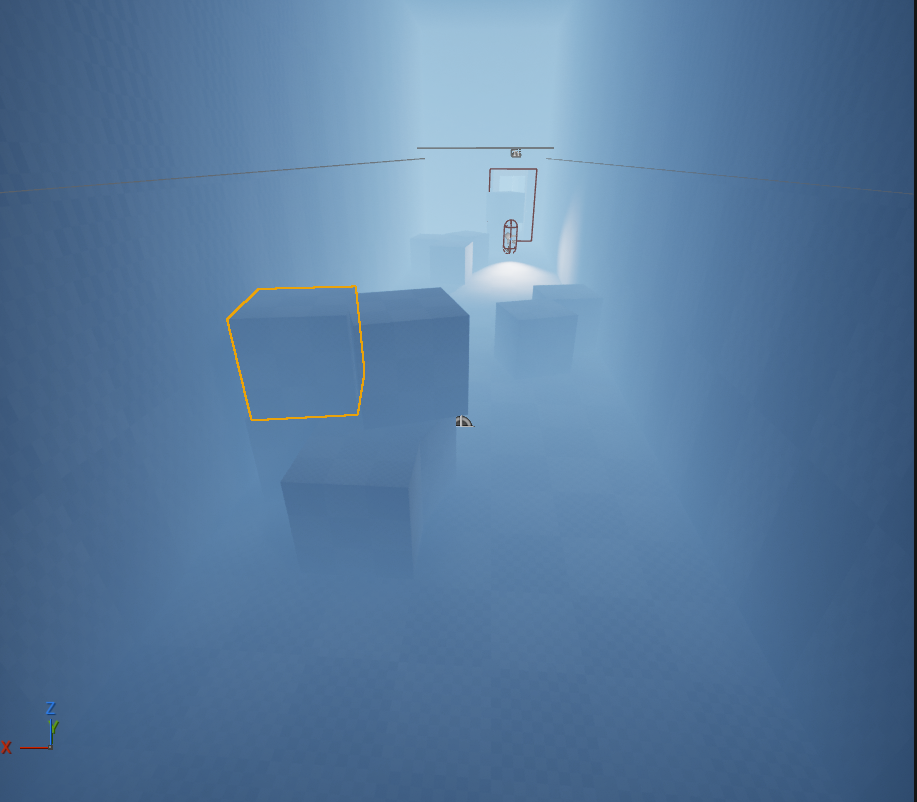

Moving up the elevator to floor two, the walkways largely serve as a lessening of tension as compared to the previous room. First of all, the walkway's enemies aren't thrust upon the player immediately and instead the player gets a much-needed checkpoint and a chance to look around. The space just before the walkways serves a dual purpose of being a break from the enemies entirely and to let the player see the upcoming patrol paths on the walkways, giving them a head start on thinking about the upcoming challenge. The break also critically gives the player time to see the relatively complex task ahead, being to collect a faraway but lit key. The walkways themselves also act as a less intense obstacle, being significantly more open and visible. They also have the critical factor that the enemies cannot see across the gaps in between them, making for a chance to either follow their patrols again or stay far away with the player’s far superior mobility. The enemy's poor vision and tendency to cover one side of the walkways more thoroughly due to their patrol paths makes the latter more than possible as well as long as the player is decently quick. After the first obstacle of the floor, the player finds themselves in what will be an office. This space has no enemies, has a checkpoint and even provides a distraction item. This room is by far the most blatant "break" in the level, which primarily serves the tension spike in the next room. It lets the player relax both to compensate for the next room and to make the relative jump even higher. In said next room, is a very precariously placed single guard in a teeny tiny (at least in terms of width) space. This corridor is even more claustrophobic than the opening, making things tight and very scary if the player gets caught due to a lack of space to escape to. By far the safest way to get through this hallway is to wait behind each part of cover, though again the player can run behind the enemy if they're quick enough. After the hallway, they catch a glance of a much faster enemy and the goal. The fast enemy is surrounded in tall cover, practically an arena. The space outside the arena also ironically acts as a small break. This space is hidden from both the previous enemy and the fast one ahead, making for a similar purpose to the very start of the walkways (catch your breath after a stressful last room, look ahead at the big bad guy). Once the player is inside with the beast though, they'll either have to take it the slow way via crouching behind limited cover (or by taking the path on their right) or blitz past them by finding a quick opening in their patrol path and timing it correctly with their dash. Then the player has to escape, though the level is notably faster on the way out due to skipping the walkways and not having to wait on the first floor elevator. The second floor is intended both as an initial ease of tension and a spike to partially catch the player off guard. The walkways are quite simple as a break, but the tight hallway and sprinting werewolf designed to make for, if not mechanically, feeling-wise quite the step up.
I chose this layout partially because the main game I took level design inspiration from was Metal Gear Solid, which is a big fan of walkways and partially to help the final escape be faster but also to make the transitions between areas feel impactful. The elevator ride to the walkways is a deterrent to sprinting straight past the enemies of the first floor, as the player will most likely need to wait a bit for the elevator to arrive or leave or time the process out by observing the elevator ahead of time (which I think is cool enough to be fine). The hallway to the final room, as discussed, also acts as an escalation.
Initial Concepts
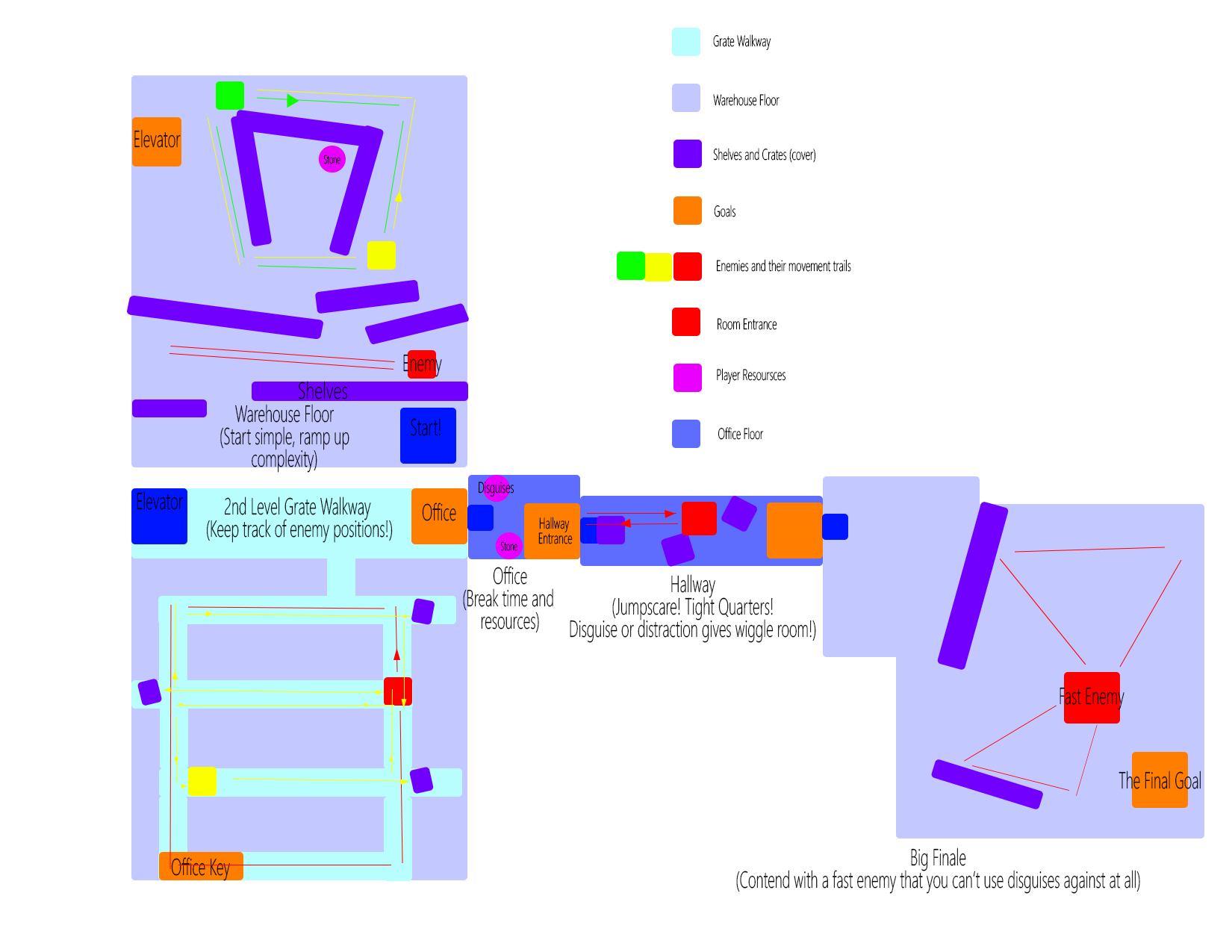
Throughout testing, the level layout hasn’t changed massively. Primarily the cover has changed, with some being added and shifted to prevent the player from being seen when immediately entering a room and more being added in general to give the player more viable routes to traverse the rooms. This primarily changed in the first floor's second challenge and the fast enemy's arena.
In my own testing, I found that the only solutions to the first floor's final test were to follow the enemy's paths to the right, know their timings and blitz by them with the dash or grab a distraction. While I enjoy the first solution and the second rewards good timing and observation, this both seemed a bit linear and punished new players to stealth games, especially when combined with waiting for the elevator. As such cover on both the left and right paths were added, with the right path getting more cover in exchange for being longer. Admittedly I think I might need to strengthen the left path due to the enemies naturally moving into the player if they choose this path, but we'll see with more testing if the solution is instead to encourage the right path visually. The fast enemy's space was even more linear, the only solutions being "go middle and be very fast," "go right and still be pretty fast" and "use a rock." While the room was intended somewhat to encourage speed, cover was added and adjusted to open up more angles to take on the challenge from. This primarily took the form of strengthening the righthand path with a slow option, giving the middle a crate to both make the straight on very fast "just run in there" route a bit harder to pull off and give a slower route a chance and busting an angled hole in one of the big walls to let the player still take the "get in and get out real fast with good timing" route unimpeded, albeit with a much slower and less direct line. Admittedly the most obvious pure slow route might be a bit too discouraged, but I do like somewhat requiring quick movement with the dash, so as always more testing is required.
Some things that have changed notably however, are the story and additional mechanics. I originally planned to have the player be a sasquatch stealing evidence of his existence by way of comically small, but mechanically effective disguises. However, I wasn’t able to find a free sasquatch model for Unreal and didn’t have time to implement the disguise mechanic. In hindsight however, while I prefer the sasquatch storyline, I think disguises would have detracted from the current level layout instead of adding to it.
Characters
While the character models I got my hands on weren’t… exactly what I wanted going in, I’d still like to thank Andrew Ermakov for the Werewolf model.
Main Character

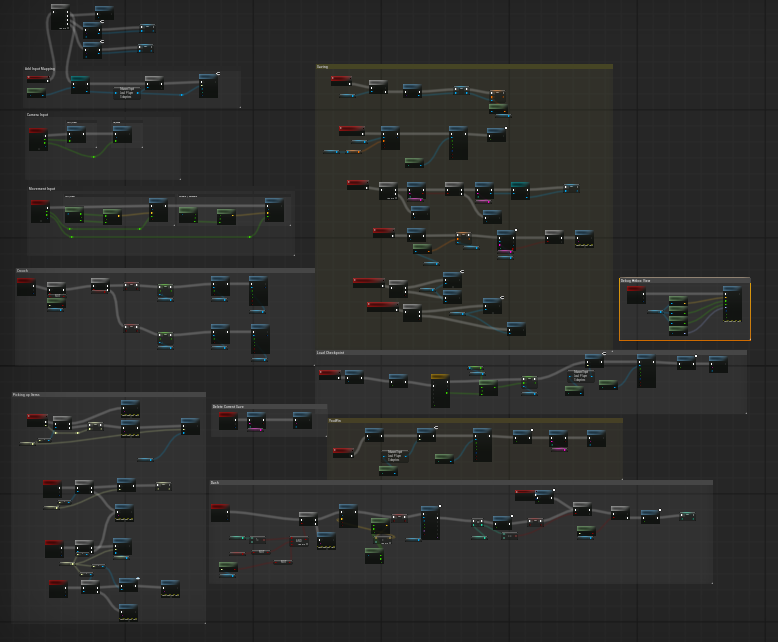
The player is pretty simple. In fact, they can’t even jump, the binding of which was removed due to not providing much to the layout itself other than confusing the player about the fact that they weren’t intended to be able to get on top of the cover. If more verticality (such as the option to run along the top of the shelves of floor 1, something that I have considered) is added at some point in the future, the ability to jump will most likely come back along with it. Other than the dash, crouch and the fact that the camera had to be moved backwards and up due to the werewolf’s massive frame, there isn’t a huge amount to discuss in regard to their mechanics.
The Enemy Trio

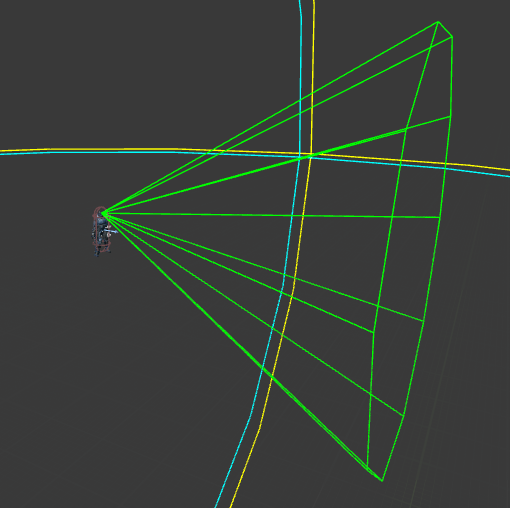
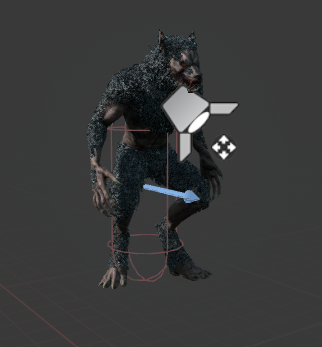
There are actually 3 different kinds of enemies, each being very similar but serving different purposes. All enemies have flashlights that are slightly bigger than their vision cones and change color when they spot the player, patrol in set paths and will chase the player upon sight but give up after not seeing them for 5 seconds. Of course, if they reach the player they take a swing, killing the player if it hits.
Far sight enemies hang out on the first floor. They see pretty far and their flashlights light farther to match. The walkways however hold the original enemies made, who have notably much smaller vision cones. These tiny cones are required for the walkways, which were designed on a basic level for the player not to be seen across their gaps, but were both very easy and weird looking in a more open plane, hence far sight enemies. The enemy in the hallway is also a basic, as I think the tight space works in the enemy’s favor enough, though this might change.
Fast Enemies however, look different and behave slightly differently. This werewolf runs notably faster than the other enemies and even faster than the player without dashing (though they can still slink away if they do use the dash) and additionally spends much less time stopped in place when it reaches its patrol points. This guy acts as the final boss of the level, requiring a distraction or clever and quick usage of the cover around its space.
Objects
Doors

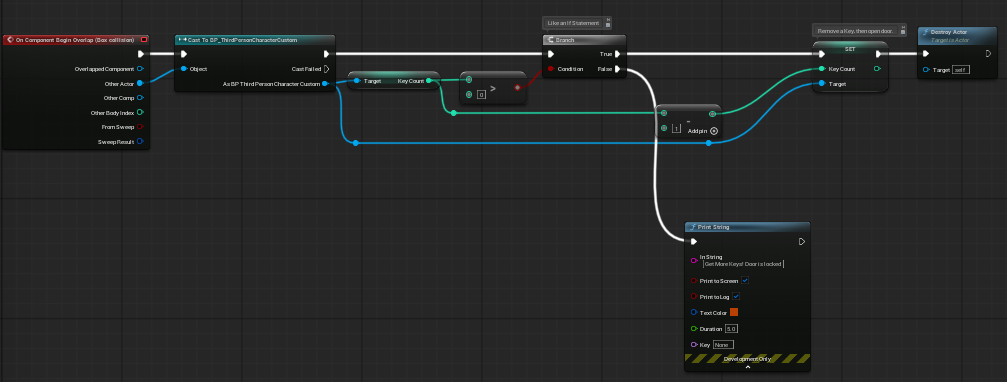
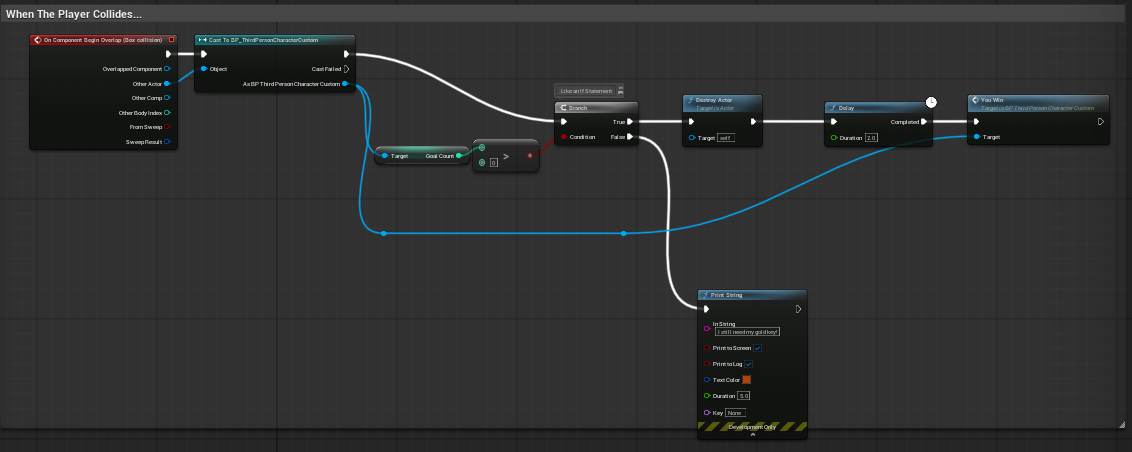
The doors in the level are almost exactly the same as those used in my first coding class, though only some are locked. Additionally, the level is beaten when the player brings the goal key to the door at the very start of the level, which forces the escape of course.
Keys
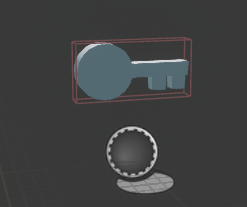



Similarly to the doors, the keys are the same outside of the goal key. Funnily enough, the goal key is much larger hitbox wise because it came up in testing that some people would physically miss the previously thin hitbox while running from the fast enemy.
Distraction
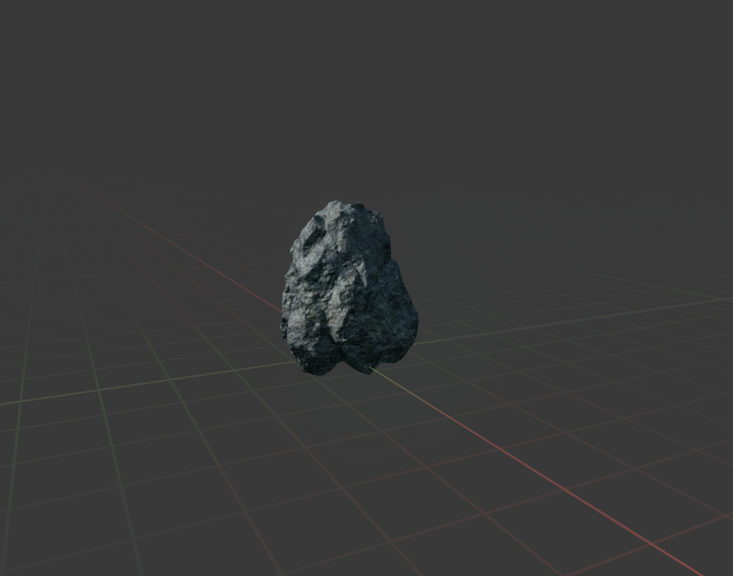
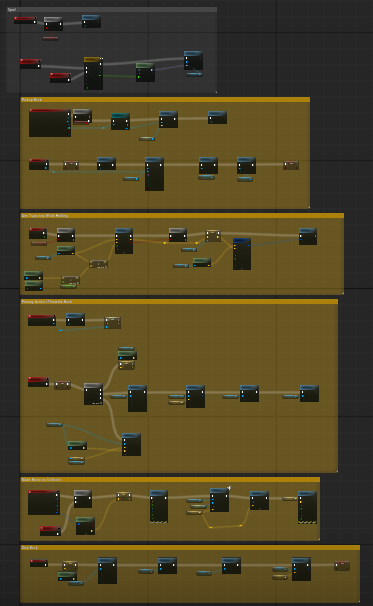
While I doubt this will stay a rock as development continues, the distraction pebble is quite useful. It acts as a reward for exploring the first room and as a way to take the heat off the hallway and fast enemy if they so wish, as enemies will of course move towards thrown rocks. Admittedly the tuning on the rock’s interaction with specifically the fast enemy might need some changes over time, but only time and further testing will tell.
Checkpoints
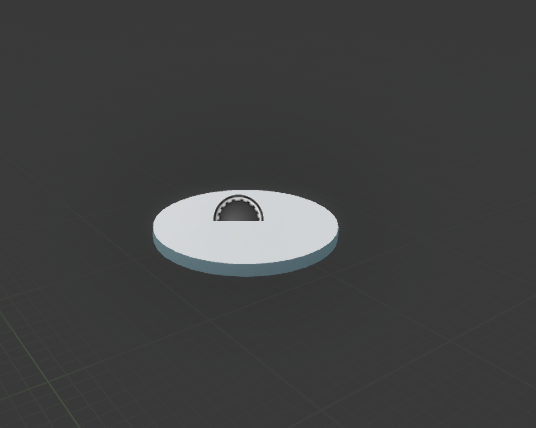

Checkpoints work how you’d expect, though they come with the side effect of setting the game back to a state where the door to the office is locked, which can lock the player in for the escape. The current solution of putting a key inside the office works, but is a bit clumsy and will ideally be changed at some point.
Conclusion
While this project ended up going in different directions than I would have hoped initially and is of course far from finished, I’m still not unhappy with how things have turned out so far. I’ll continue fine tuning the level and mechanics as the semester goes on, but for now I’m glad to have learned much about both Unreal and especially giving information to players. This real world experience with real world players has opened my eyes to many small details about level design and game coding that I wouldn’t have considered on my own, which I appreciate greatly.
I thank you for reading my ramblings and I wish you a good day.
Files
Get Game1StealthGame
Game1StealthGame
| Status | In development |
| Author | IanCook |
| Tags | 3D, Stealth, student, Third Person |
More posts
- The Bean Tower: Minigame94 days ago
Leave a comment
Log in with itch.io to leave a comment.